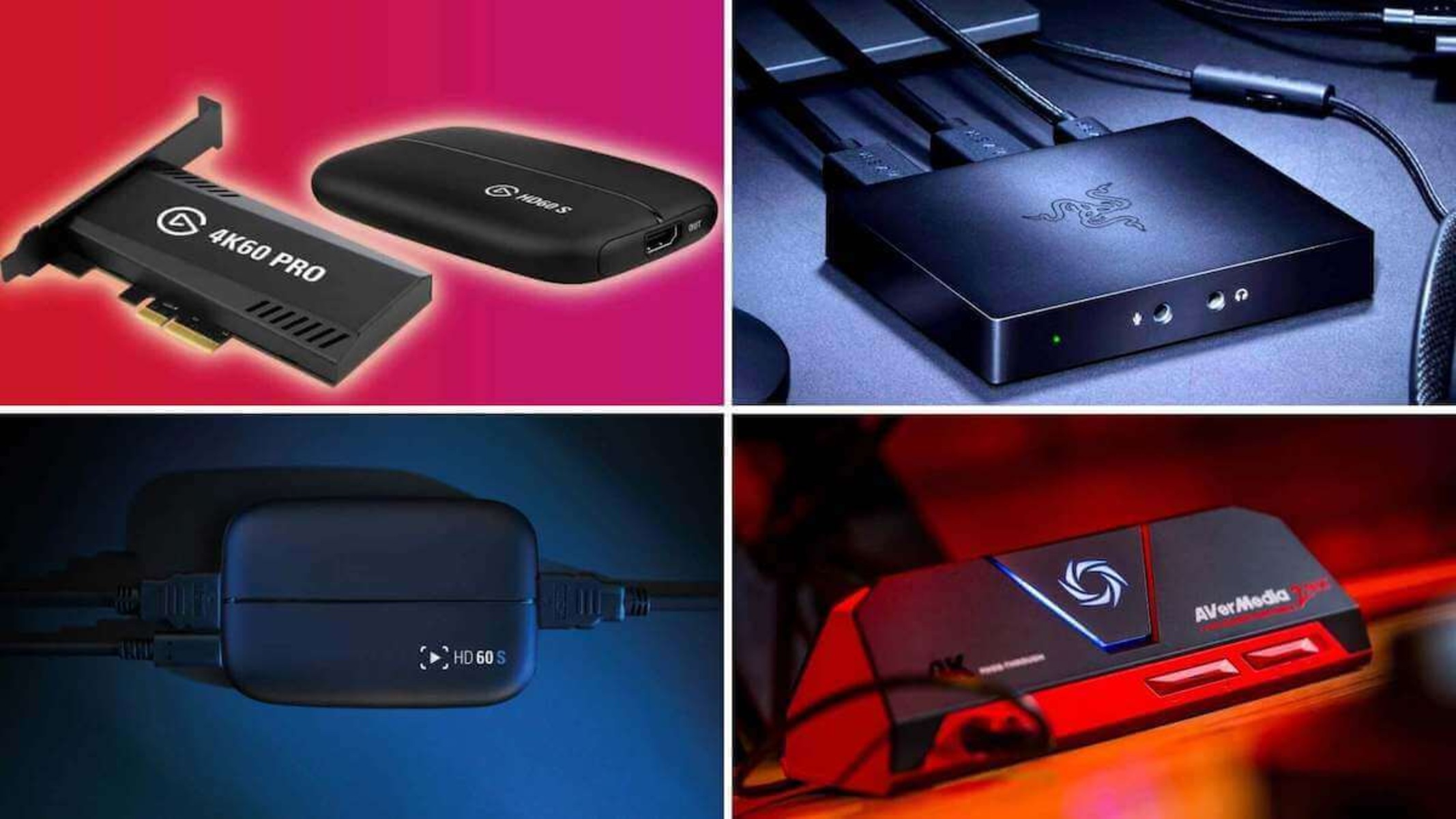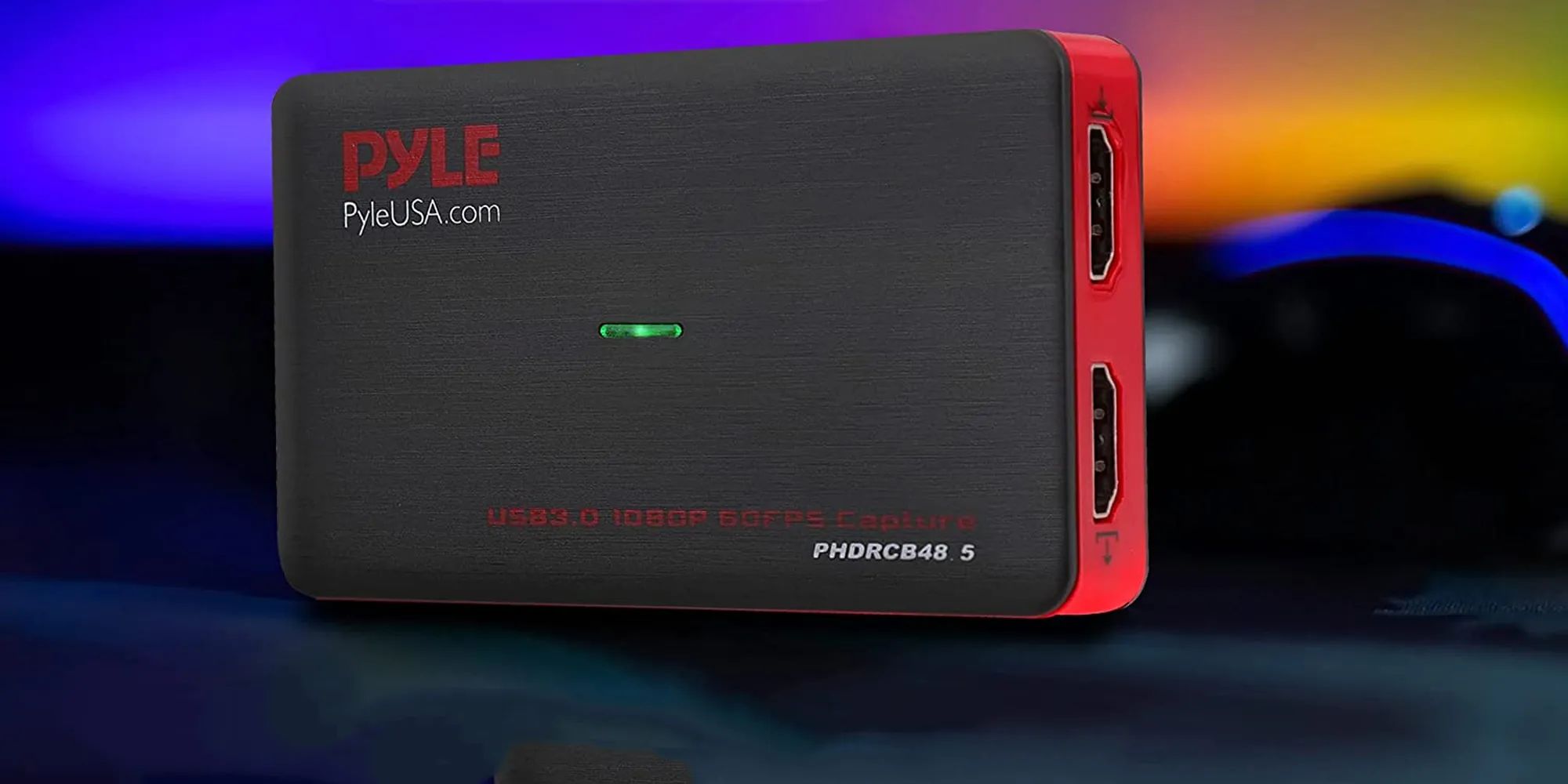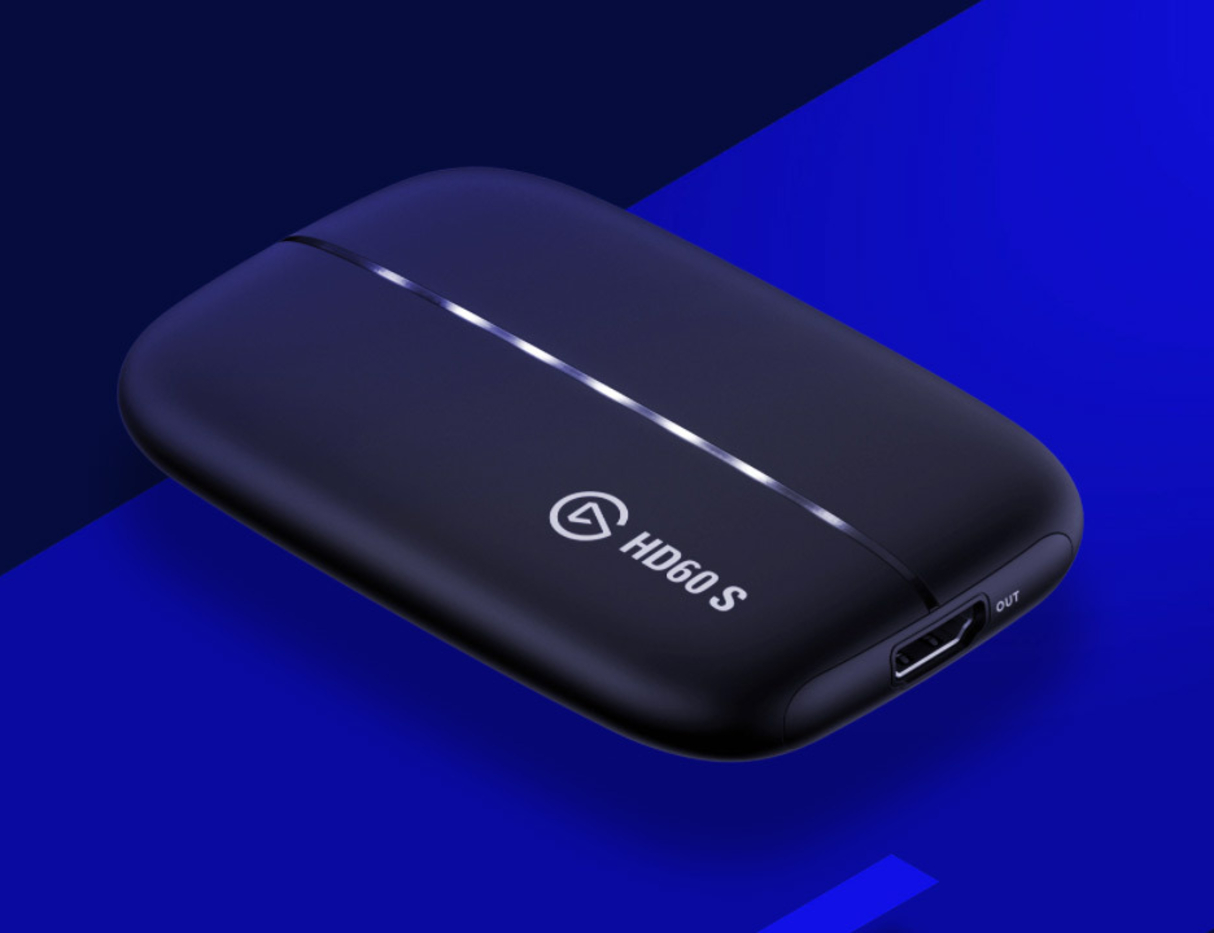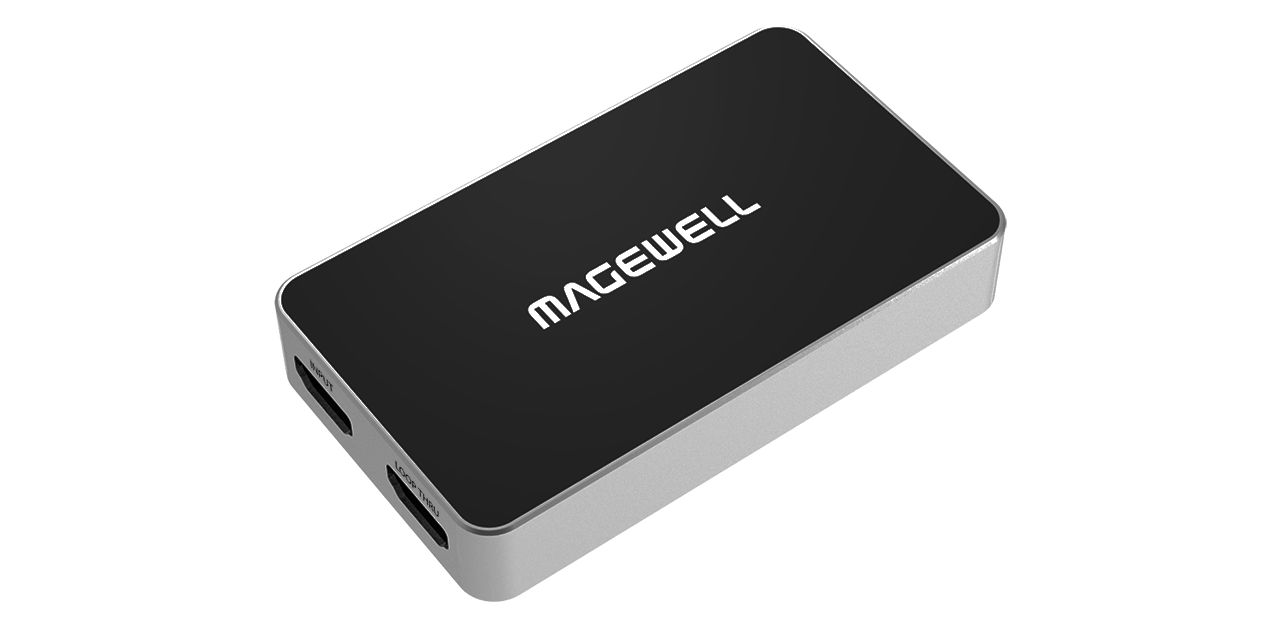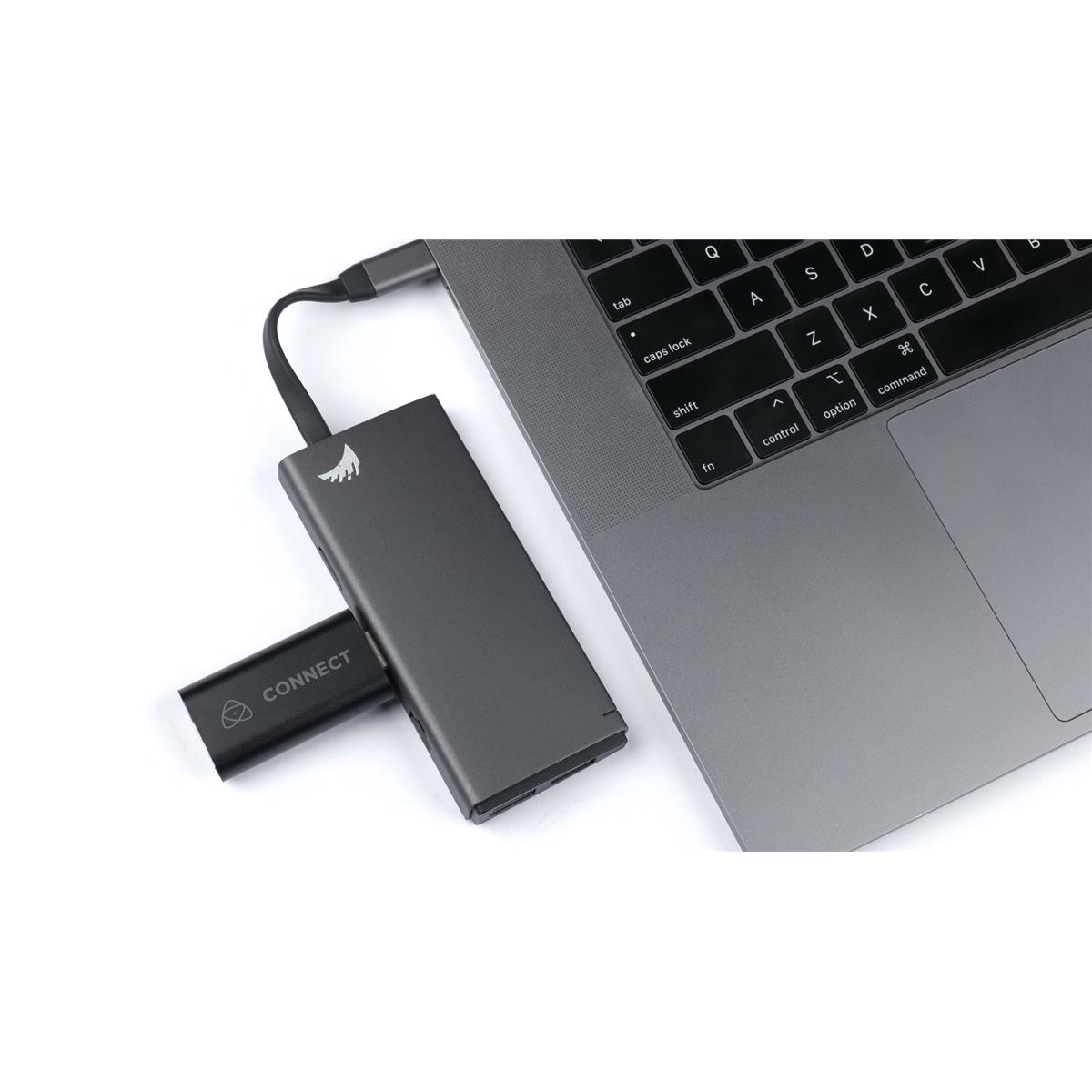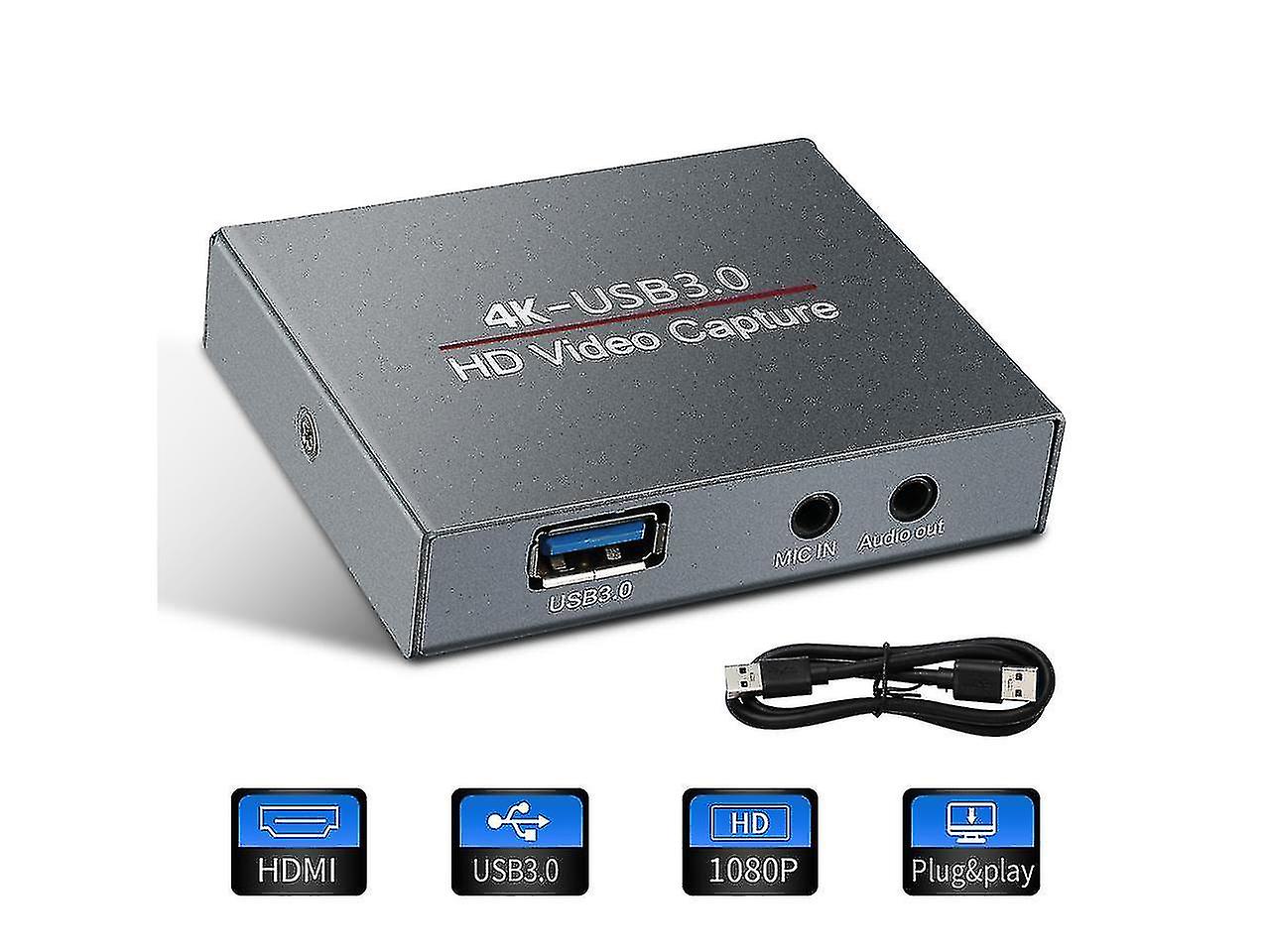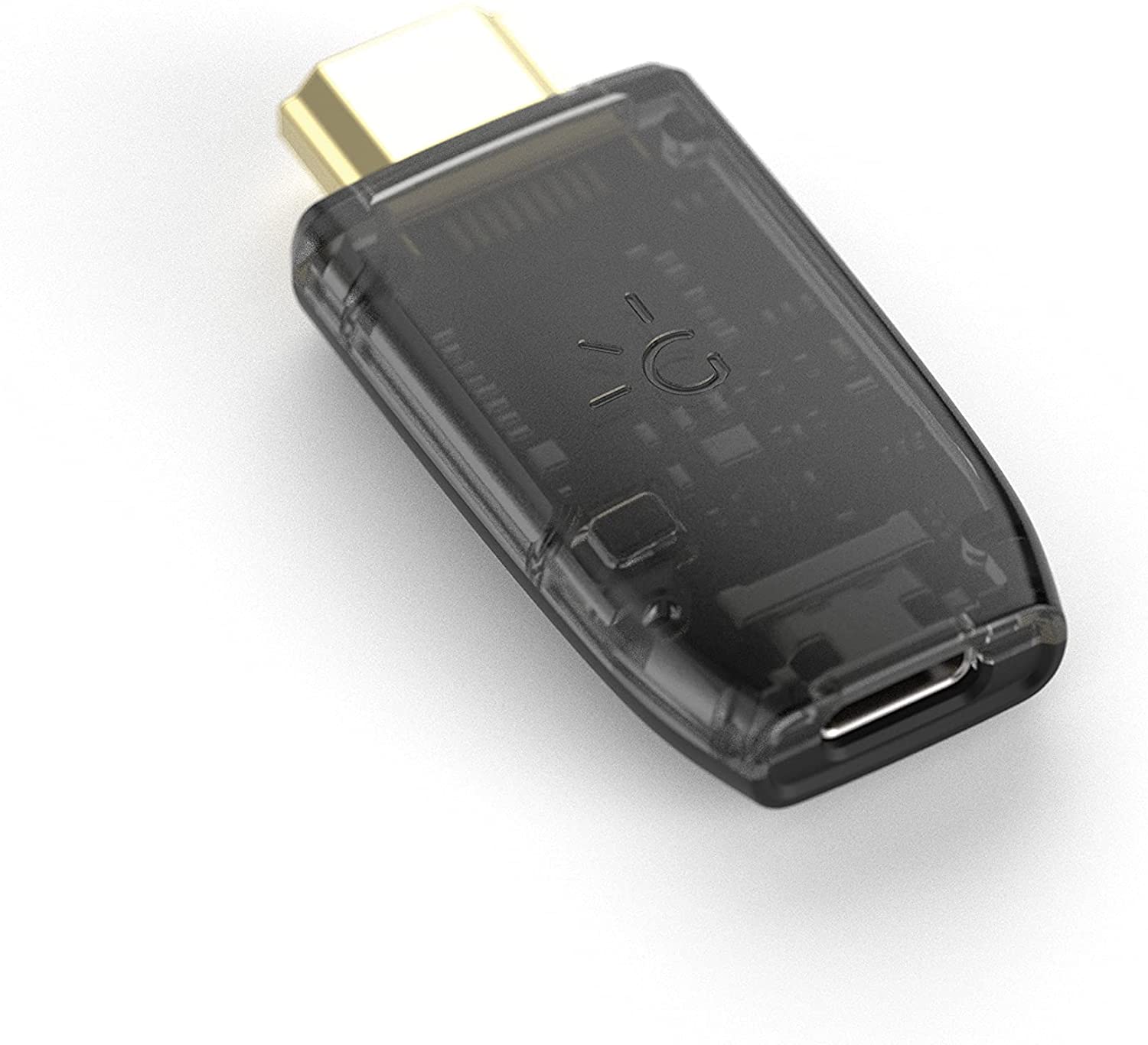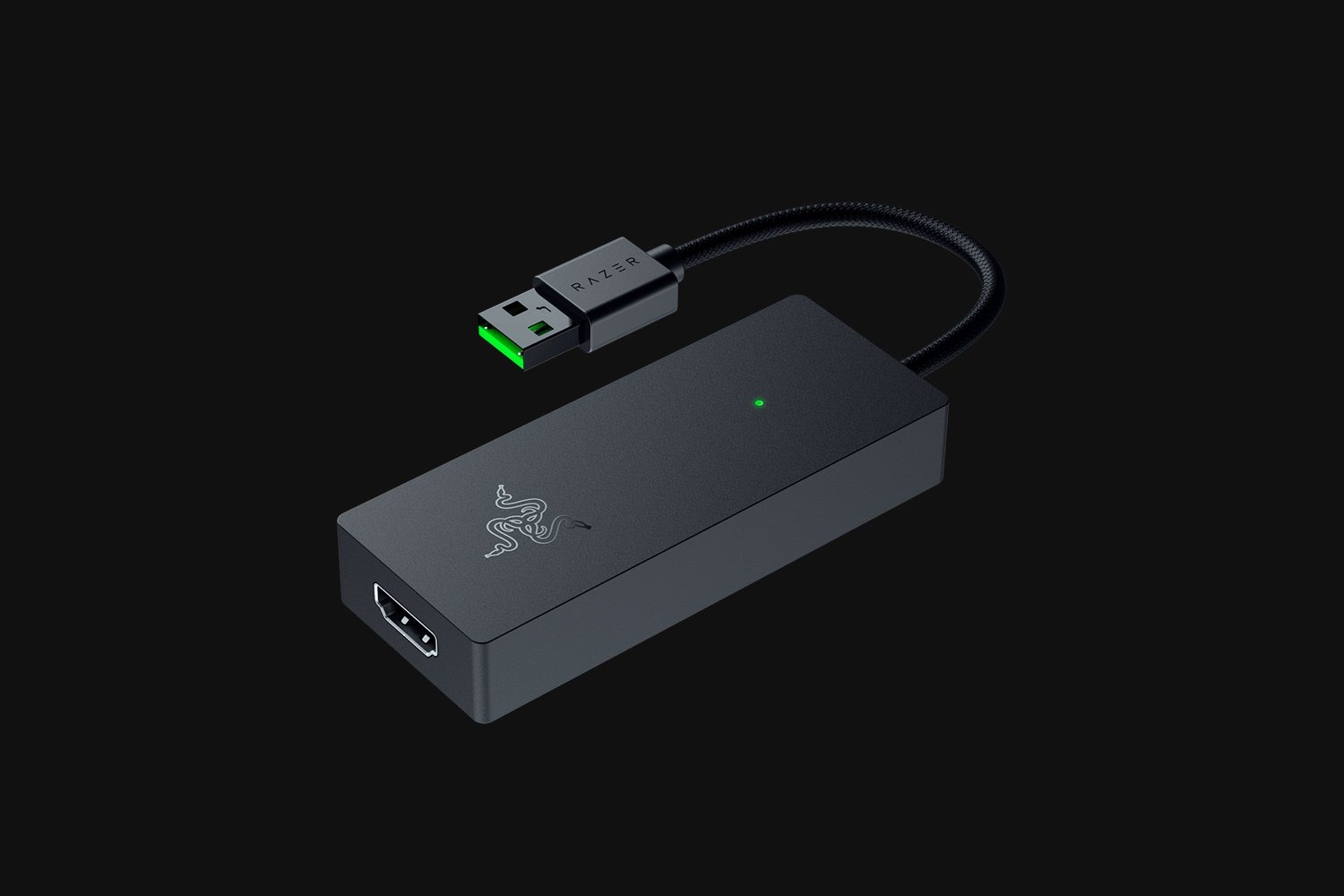Introduction
Streaming has rapidly become a popular form of entertainment, with countless individuals sharing their gaming adventures, tutorials, and creative endeavors with audiences around the world. However, to ensure a smooth and professional streaming experience, streamers often rely on various tools and equipment to enhance the quality of their broadcasts. One essential tool that has gained significant attention in the streaming community is the capture card.
What exactly is a capture card?
A capture card is a device that allows users to capture, record, and stream audio and video content from an external source, such as a gaming console or a second computer. It acts as a bridge between the source and the streaming software, enabling users to capture high-quality, real-time footage and stream it to their audience.
How does a capture card work?
When using a capture card, the audio and video signals from the source device are sent to the capture card via HDMI or other input methods. The capture card then encodes the signals into a digital format that can be understood by the streaming software. This encoded data is transferred to the computer, where it can be processed, edited, and streamed in real-time to various streaming platforms.
Now that we understand the basics of what a capture card is and how it works, let’s delve into the benefits that capture cards bring to streaming setups. By utilizing a capture card, streamers can elevate their streaming experience, improve the video quality of their broadcasts, reduce strain on their computers, capture console gameplay, and more. In the following sections, we will explore these benefits in detail and guide you on how to choose the right capture card for your streaming needs.
What is a capture card?
A capture card is a hardware device that helps streamers and content creators capture and record high-quality audio and video footage from external sources, such as gaming consoles, cameras, or other media devices. It serves as a crucial tool in the streaming industry, allowing streamers to deliver professional-grade broadcasts and engage their audience in a visually impressive manner.
Typically, capture cards come in two main types: internal and external. Internal capture cards are installed directly into a computer’s PCI or PCIe slot, while external capture cards are connected to the computer via USB or Thunderbolt ports. Both types serve the same purpose of capturing and encoding audio and video data for streaming or recording.
So how exactly does a capture card work? When you connect an external source, such as a gaming console, to a capture card, the device acts as an intermediary between the source and the computer. It takes the audio and video signals from the source and converts them into a digital format that can be understood by streaming software or recording programs.
The capture card then transfers the encoded data to the computer, where it can be processed and streamed to platforms such as Twitch, YouTube, or Facebook Live. This allows streamers to showcase their gameplay, provide commentary, or engage in interactive sessions with their audience, all in real-time.
One of the key features of capture cards is their ability to handle high-resolution video and audio. They can capture footage in formats such as 1080p or even 4K, depending on the capabilities of the card. This ensures that the streaming quality remains crisp and detailed, providing viewers with an immersive experience.
Furthermore, capture cards often come with additional features such as built-in hardware encoders, which offload the encoding process from the computer’s CPU, reducing strain and preventing performance issues. Some capture cards also offer passthrough capabilities, allowing users to connect their gaming consoles directly to their monitors or TVs while still capturing the footage for streaming or recording.
In summary, a capture card is an essential tool for streamers and content creators who want to elevate their broadcasts by capturing high-quality audio and video footage from external sources. Whether it’s showcasing gaming skills, conducting live events, or creating professional tutorials, capture cards provide the necessary hardware solutions to deliver impressive and engaging content to audiences worldwide.
How does a capture card work?
A capture card is a hardware device that plays a vital role in capturing, encoding, and transferring audio and video from an external source to a computer for streaming or recording purposes. Understanding how a capture card works is essential for streamers and content creators who want to optimize their streaming setup and deliver high-quality broadcasts.
When you connect an external source, such as a gaming console or camera, to a capture card, the first step is to establish a connection between the source and the capture card. This is typically done using an HDMI cable or other compatible input methods. The video and audio signals from the source are then transmitted to the capture card.
Once the signals reach the capture card, the device performs two primary functions: encoding and transferring the data. The capture card encodes the raw audio and video signals into a digital format that can be understood by streaming software or recording programs. This encoding process compresses and packages the data in a way that reduces file size and allows for efficient transmission.
After encoding, the capture card transfers the encoded data to the computer. This transfer can be done via a physical connection, such as a USB or Thunderbolt port for external capture cards, or through the computer’s internal bus system for internal capture cards. The computer then receives the data and makes it available for processing, editing, and streaming.
At this point, the streaming software or recording program on the computer can access the captured audio and video data from the capture card. The software utilizes this data to produce the final output that is streamed or recorded. It may apply additional effects, overlays, or modifications based on the user’s preferences, creating a visually appealing and engaging broadcast.
It’s important to note that capture cards can vary in terms of their capabilities and features. Some capture cards offer hardware encoders built into the device, which relieve the computer’s CPU from the burden of encoding, resulting in improved overall performance. Others may provide options for adjusting video settings, such as resolution, frame rate, or bitrate, to optimize the streaming quality.
In summary, a capture card works by receiving audio and video signals from an external source, encoding them into a digital format, and transferring the encoded data to a computer for processing and streaming. By efficiently handling the encoding and transfer process, capture cards enable streamers to deliver high-quality, real-time content to their audience, enhancing the overall streaming experience.
Benefits of using a capture card for streaming
Utilizing a capture card in your streaming setup can bring numerous benefits that enhance the overall quality and versatility of your broadcasts. Whether you’re a professional streamer or just starting out, understanding these benefits can help you make an informed decision about incorporating a capture card into your streaming workflow.
Improved video quality: One of the main advantages of using a capture card is the ability to capture and stream higher-quality video footage. Capture cards can handle resolutions up to 4K, ensuring that your stream looks crisp, detailed, and visually appealing to your audience. This improved video quality can make your content stand out among competitors and provide a more immersive viewing experience.
Reduced strain on the computer: Streaming can be resource-intensive, placing a significant load on your computer’s CPU and GPU. However, by offloading the encoding process to a capture card with a built-in hardware encoder, you can reduce the strain on your computer’s resources. This frees up your CPU for other tasks and ensures that your stream runs smoothly without compromising performance.
Ability to capture console gameplay: Console gamers often face limitations when it comes to streaming directly from their gaming consoles. By integrating a capture card into their setup, console gamers can bypass these limitations and capture high-quality gameplay footage to stream on platforms like Twitch or YouTube. This opens up opportunities for console gamers to share their gaming experiences and engage with their audience.
Simultaneous streaming and recording: With a capture card, you can simultaneously stream your content to various platforms while also recording it locally. This allows you to create backup recordings, edit the footage later, or repurpose it for other content creation endeavors. Simultaneous streaming and recording provide flexibility and additional options for streamers to maximize the value of their content.
Compatibility with different platforms: Capture cards are designed to be compatible with a wide range of streaming software and platforms. Whether you’re using OBS Studio, Streamlabs, or XSplit, a capture card seamlessly integrates with these popular streaming software, providing a smooth and efficient streaming experience. Additionally, capture cards are compatible with different operating systems, including Windows, macOS, and even some Linux distributions.
By harnessing the benefits of a capture card, streamers can elevate the quality of their broadcasts, reduce the strain on their computer, capture console gameplay, and achieve a more professional and versatile streaming setup. These advantages contribute to an enhanced viewer experience and allow streamers to deliver engaging and captivating content to their audience.
Improved video quality
One of the prominent benefits of using a capture card for streaming is the significant improvement in video quality that it offers. Capture cards are designed to handle high resolutions, such as 1080p or even 4K, ensuring that your stream looks visually stunning and captures every detail of your gameplay or content.
With a capture card, you can capture the raw video feed directly from your source device, whether it’s a gaming console, camera, or another media device, and transmit it to your computer. This direct capture allows for a lossless transfer of video data, resulting in a more accurate representation of the original content.
Furthermore, capture cards often come equipped with advanced video processing capabilities, such as hardware encoders and onboard scalers. These features help optimize the video quality by reducing artifacts, maintaining smooth motion, and enhancing color accuracy. The result is a more vivid, crisp, and visually appealing stream that captivates your audience.
Moreover, using a capture card can provide a significant advantage for streamers who want to showcase their gameplay or creative work. Streaming platforms often prioritize streams with higher video quality, as they tend to attract more viewers and engagement. By utilizing a capture card to achieve superior video quality, you can make your stream stand out from the competition and draw in a larger audience.
In addition to the overall visual quality, capture cards also ensure a consistent frame rate during the streaming process. This is crucial for delivering smooth and fluid video playback, especially in fast-paced gaming scenarios. Capture cards can handle high frame rates, allowing for a seamless viewing experience and preventing any stutters or lag that could otherwise hinder the enjoyment of your content.
It’s worth noting that the improved video quality achieved through the use of a capture card is not only beneficial for live streaming but also for recording videos. If you create content for platforms like YouTube or produce tutorials or walkthroughs, capturing video with a capture card ensures that every detail is captured in high fidelity, enhancing the overall viewing experience for your audience.
In summary, a capture card has the capability to significantly enhance the video quality of your streams or recordings. By capturing and transferring raw video data directly to your computer, utilizing advanced video processing features, and maintaining consistent frame rates, a capture card ensures that your content looks visually stunning, immersive, and engaging. This improved video quality helps attract and retain viewers, ultimately contributing to the growth and success of your streaming endeavors.
Reduced strain on the computer
Streaming can put a significant strain on your computer’s resources, especially when it comes to the encoding process. However, using a capture card can alleviate this strain and improve the overall performance of your computer during streaming sessions.
When you stream without a capture card, the encoding of audio and video data is typically handled by your computer’s CPU. This process can be demanding, particularly if you’re streaming at higher resolutions or with complex scenes in your content. As a result, your computer’s CPU usage might increase, leading to potential performance issues, such as dropped frames, audio desync, or even crashes.
By integrating a capture card with a built-in hardware encoder into your setup, you can offload the encoding process from your computer’s CPU. The capture card takes on the task of encoding the audio and video data, freeing up your computer’s resources to handle other important tasks during your stream.
A hardware encoder on a capture card is specifically designed to handle encoding efficiently, making it more capable and reliable in encoding video data compared to software-based encoders. With the encoding process handled by the capture card, your computer’s CPU can prioritize other critical tasks related to streaming, such as running your streaming software, managing overlays, or interacting with your audience.
Reducing the strain on your computer also has the benefit of enhancing the overall streaming experience. With fewer resources devoted to encoding, you’re less likely to encounter performance-related issues that can negatively impact the quality and stability of your stream. A smoother streaming experience means a more enjoyable viewing experience for your audience.
In addition to the benefits mentioned above, using a capture card can also enable you to stream at higher resolutions or with increased encoding settings. Since the capture card handles the encoding process, you can push the limits of your stream’s visual quality without worrying about overloading your computer’s CPU.
Furthermore, capturing video with a capture card can reduce the processing load on your computer, even when you’re not actively streaming. When it comes to recording gameplay or creating video content, using a capture card ensures that your computer can focus on capturing and saving the footage, rather than simultaneously encoding it. This can prevent any hitches or dropped frames in your recorded content.
In summary, utilizing a capture card with a hardware encoder significantly reduces the strain on your computer during streaming or recording. By offloading the encoding process, your computer’s CPU can operate more efficiently, resulting in improved overall performance, fewer performance-related issues, and the ability to push the boundaries of your stream’s visual quality. Ultimately, this enhances both your streaming experience and the viewing experience for your audience.
Ability to capture console gameplay
For console gamers who want to share their gameplay with others, a capture card can be a game-changer. It enables you to capture and stream your console gameplay, expanding your audience beyond just the players on your specific gaming platform.
Console gaming platforms, such as PlayStation, Xbox, or Nintendo Switch, typically have built-in streaming capabilities. However, these built-in features often come with limitations that can hinder the quality and flexibility of your streams. This is where a capture card comes in handy.
By connecting your gaming console to a capture card, you can directly capture the audio and video signals from your console and transmit them to your computer for streaming. This setup allows you to bypass the limitations imposed by the console’s built-in streaming functionalities and provides you with more control over your stream.
With a capture card, you can take advantage of the advanced features offered by popular streaming software, such as custom overlays, alerts, facecam integration, and more. These features help enhance the presentation of your gameplay and engage your audience on a deeper level.
Another advantage of using a capture card for console gameplay is the ability to stream at higher resolutions and frame rates. While some consoles may have limitations on the maximum resolution or frame rate for their built-in streaming options, a capture card can enable you to stream at resolutions up to 4K and frame rates up to 60 frames per second (FPS), depending on the capabilities of the capture card.
Furthermore, capturing console gameplay with a capture card allows you to take advantage of additional functionalities, such as recording locally while streaming or utilizing advanced editing software for post-processing. This flexibility gives you the freedom to create highlights, montages, or other content using the captured footage, enhancing your overall content creation capabilities.
Additionally, capturing console gameplay through a capture card enables you to stream on various platforms simultaneously. Whether you want to stream on Twitch, YouTube, or other streaming platforms simultaneously, a capture card allows you to easily switch between platforms and expand your reach to a wider audience.
Lastly, using a capture card for console gameplay ensures that you’re able to stream without any compromises in terms of performance or quality. Since the capture card handles the encoding process separately from your console, the impact on your gaming performance is minimal. This means you can focus on delivering exceptional gameplay and interactive sessions with your viewers.
In summary, a capture card provides console gamers with the ability to capture and stream their gameplay beyond the limitations of their gaming console’s built-in streaming functionality. With a capture card, you can enjoy enhanced features, higher resolutions, and greater flexibility during your streams. It expands your audience and enables you to create content that stands out in the gaming community.
Simultaneous streaming and recording
One of the key advantages of using a capture card in your streaming setup is the ability to simultaneously stream your content live to your audience while also recording it locally. This feature offers several benefits and opens up new possibilities for content creators.
Simultaneous streaming and recording provide a backup of your content, ensuring that you have a recording of your stream in case of any technical issues or if you want to edit and repurpose the footage later. It serves as a safety net, allowing you to preserve your content and address any unforeseen circumstances that may occur during the live stream.
This feature is particularly advantageous for streamers who produce tutorial videos, walkthroughs, or in-depth analysis of games. By simultaneously recording the stream, you have the raw footage readily available, which can be edited or trimmed to create concise and impactful video content for platforms like YouTube. This not only saves you time but also allows you to provide high-quality, pre-recorded content to your audience alongside your live streams.
Simultaneous streaming and recording can also be useful for streamers who want to review and analyze their own gameplay or performance after the stream ends. By having a local recording of the stream, you can revisit specific moments, analyze your strategies, or gather feedback from viewers to further improve your skills and content.
Additonally, this feature allows you to capture and save memorable moments that occur during your stream. Whether it’s a game-winning play, a funny interaction with chat, or a heartwarming moment of connection with your audience, having a recording of these moments enables you to preserve and share them with your community, even after the stream has ended.
Furthermore, simultaneous streaming and recording provide flexibility when it comes to content creation. You can experiment with different streaming setups, overlays, or interactive elements during your live streams, knowing that you have a backup recording in case something doesn’t go as planned. This freedom to explore and iterate without the fear of losing your content fosters creativity and encourages streamers to push boundaries and try new things.
In summary, capturing the ability to simultaneously stream and record your content with a capture card empowers you as a content creator. It provides a safety net, allows for the creation of additional pre-recorded content, offers opportunities for analysis and improvement, and preserves memorable moments from your live streams. This feature adds versatility to your streaming setup and enhances your overall content creation capabilities.
Compatibility with different platforms
A significant advantage of using a capture card for streaming is its compatibility with various platforms, enabling streamers to reach a wider audience and customize their streaming experience according to their preferences.
Capture cards are designed to work seamlessly with popular streaming software, such as OBS Studio, Streamlabs OBS, XSplit, and more. These software platforms are widely used by streamers and offer a range of advanced features for customization, overlays, alerts, and scene transitions. By integrating a capture card into your streaming setup, you can leverage the capabilities of these software platforms and enhance your streaming experience.
In addition to compatibility with streaming software, capture cards are also compatible with different operating systems. Whether you’re using Windows, macOS, or even some Linux distributions, there are capture cards available that support your preferred operating system. This compatibility ensures that streamers have the flexibility to choose the platform that works best for their needs.
Moreover, capture cards are compatible with a variety of streaming platforms, including Twitch, YouTube, Facebook Live, and more. Whether you want to focus on one specific platform or stream simultaneously to multiple platforms, a capture card enables you to do so seamlessly. This compatibility allows you to reach a broader audience and engage with viewers on their preferred platforms.
With capture cards, streamers can also explore multi-platform streaming strategies. For example, you can use your capture card to simultaneously stream your content to different platforms, each catering to a specific audience or niche. This opens up opportunities to expand your viewership, gain exposure, and interact with diverse communities.
Furthermore, capture cards are not limited to streaming from gaming consoles alone. They also offer compatibility with a range of other external devices, such as cameras, camcorders, DSLRs, or even VCRs. This versatility allows you to incorporate different sources into your streams, expanding the possibilities for content creation and providing flexibility in how you engage with your audience.
Additionally, capture cards support a wide range of video and audio input formats, including HDMI, composite, or component inputs. This extensive compatibility ensures that you can connect and capture from various devices and sources, providing greater options when it comes to the content you create and share with your viewers.
In summary, capture cards offer compatibility with popular streaming software, different operating systems, and a variety of streaming platforms. This compatibility allows streamers to customize their setups, reach a broader audience, explore multi-platform strategies, and incorporate various sources into their streams. The flexibility that capture cards provide empowers streamers to create content that is tailored to their preferences and engages with audiences across different platforms.
Types of capture cards
When it comes to choosing a capture card for your streaming setup, it’s essential to consider the different types available. Here, we’ll explore the two main types of capture cards: internal capture cards and external capture cards.
Internal capture cards: As the name suggests, internal capture cards are installed directly into a computer’s PCI or PCIe slots. These capture cards require opening up the computer’s case and physically connecting the card to the appropriate slot. Once installed, they become an integral part of your computer’s hardware configuration.
Internal capture cards offer several advantages, including faster data transfer rates, lower latency, and potentially better overall performance. Since they are directly connected to the computer’s internal bus system, they can transfer data more efficiently and deliver a smoother streaming experience.
Another benefit of internal capture cards is that they occupy less desk space, as they are installed internally. This can be particularly advantageous for streamers with limited desk space or prefer a more streamlined setup.
However, it’s worth noting that installing an internal capture card requires technical know-how and careful consideration of compatibility with your computer’s specifications. It’s important to ensure that your computer has the necessary PCIe slots available and is compatible with the capture card you intend to install.
External capture cards: On the other hand, external capture cards are standalone devices that connect to your computer via USB, Thunderbolt, or other external ports. They don’t require opening up your computer’s case and are easily portable, making them a convenient option for streamers who want flexibility in moving their streaming setup between different locations.
External capture cards offer plug-and-play functionality, which means they can be easily connected and disconnected from your computer without the need for any internal hardware modifications. This versatility allows you to use the capture card with multiple computers or switch between different devices quickly.
Additionally, external capture cards generally offer a wide range of connectivity options, including HDMI, component, or composite inputs, making them compatible with various devices and sources beyond just gaming consoles.
While external capture cards provide convenience and flexibility, they may introduce additional latency due to the data transfer being reliant on external ports. However, the latency is usually minimal and often not noticeable during regular streaming or recording.
It’s essential to consider your specific needs and preferences when deciding between internal and external capture cards. If you prioritize performance, have the technical expertise, and prefer a more permanent setup, an internal capture card might be the right choice. Alternatively, if you value portability, ease of use, and versatility, an external capture card may better suit your needs.
In summary, internal capture cards are installed directly into your computer’s slots, offering faster data transfer and potentially better performance. External capture cards, on the other hand, connect to your computer via external ports, providing flexibility and portability. The choice between the two types depends on factors such as your technical expertise, desired setup, and portability requirements.
Internal capture cards
Internal capture cards are an important component in a streaming setup. These capture cards are installed directly into a computer’s PCI or PCIe slots, making them an integral part of the computer’s hardware configuration.
One of the significant advantages of internal capture cards is the faster data transfer rates they offer. Since they are connected directly to the computer’s internal bus system, they can transfer audio and video data more efficiently, minimizing latency and ensuring a smoother streaming experience. This can be particularly beneficial for streamers who value real-time interactions with their audience.
Another advantage of internal capture cards is that they typically offer lower latency compared to their external counterparts. The direct connection to the computer’s internal bus system allows for faster communication between the capture card and the computer, resulting in minimal delays between the captured footage and its display on the stream. This can be crucial for streamers who engage in fast-paced gaming or require precise synchronization between audio and video elements.
Additionally, the use of an internal capture card frees up external ports on your computer, as the card uses the available PCI or PCIe slots. This can be advantageous if you have limited external port availability or if you prefer a cleaner, clutter-free setup.
However, it’s important to note that installing an internal capture card requires technical expertise and careful consideration of compatibility with your computer’s specifications. You need to ensure that your computer has the necessary slots available (typically PCI or PCIe) and that the capture card is compatible with your computer’s architecture.
When choosing an internal capture card, it’s essential to consider factors such as the supported input/output formats, maximum resolution and frame rates, and specific features that may enhance your streaming setup, such as hardware encoders or passthrough capabilities.
Overall, internal capture cards are an excellent choice for streamers who prioritize performance, have the technical expertise for installation, and desire a more permanent streaming setup. These cards provide efficient data transfer, low latency, and often offer a wide range of features to enhance your streaming and recording capabilities.
External capture cards
External capture cards are standalone devices that connect to your computer via USB, Thunderbolt, or other external ports. They provide a convenient and versatile solution for capturing and streaming audio and video content.
One of the key advantages of external capture cards is their plug-and-play functionality. They can be easily connected and disconnected from your computer without the need for any internal hardware modifications. This makes them a flexible option for streamers who may want to use the capture card with multiple computers or switch between different devices for streaming.
External capture cards offer a wide range of connectivity options, including HDMI, component, or composite inputs. This versatility allows you to connect various devices and sources, such as gaming consoles, cameras, or even VCRs, to capture and incorporate their audio and video feed into your streams.
Portability is another significant advantage of external capture cards. Since they are not permanently installed inside your computer, they can be easily unplugged and moved between different locations. This can be particularly beneficial for streamers who travel frequently for events or streaming sessions, as they can take their capture card with them and set up their streaming equipment wherever they go.
External capture cards also tend to be more user-friendly for streamers who may not have advanced technical knowledge. With their straightforward plug-and-play setup, you can quickly connect the capture card to your computer and start capturing and streaming content without the need for extensive configuration or internal hardware modifications.
Furthermore, external capture cards are often compatible with multiple operating systems, including Windows, macOS, and some Linux distributions. This ensures that you can use the capture card with your preferred operating system, regardless of the specific setup you have.
When considering an external capture card, it’s important to note that they may introduce slightly more latency compared to their internal counterparts. However, the latency is generally minimal and usually not noticeable during regular streaming or recording.
Overall, external capture cards provide convenience, flexibility, and versatility for streamers. Their plug-and-play functionality, wide range of connectivity options, portability, and compatibility with different operating systems make them an excellent choice for streamers who value ease of use, versatility, and the ability to capture content from various sources with minimal technical expertise required.
How to choose the right capture card for streaming
Choosing the right capture card is crucial for optimizing your streaming setup and delivering high-quality content to your audience. With a wide range of options available, here are some factors to consider when selecting the right capture card for your streaming needs.
Consider your needs and budget: Start by assessing your streaming requirements. Determine whether you need to capture and stream gameplay from consoles, include camera feeds, or incorporate other external sources into your streams. Identify your budget and prioritize the features that are most important to you.
Check compatibility with your streaming setup: Ensure that the capture card you choose is compatible with your specific streaming software, such as OBS Studio, Streamlabs OBS, or XSplit. Compatibility varies depending on the capture card manufacturer and the software you intend to use, so it’s essential to verify compatibility before making a purchase.
Evaluate video quality and performance: Consider the maximum resolution, frame rate, and video bitrate supported by the capture card. Higher-end capture cards can handle resolutions up to 4K and provide smoother streaming experiences with minimal impact on performance. Look for capture cards with features like hardware encoders or onboard scalers, which can enhance video quality and reduce strain on your computer’s resources.
Look for additional features: Explore the additional features offered by capture cards, such as passthrough capabilities, audio mixing, or built-in streaming overlays. These features can enhance your production value and customization options, allowing you to create more engaging and polished streams.
Consider connectivity options: Depending on your preferred devices and sources, evaluate the capture card’s available connectivity options. Ensure that it supports the types of inputs (HDMI, component, composite, etc.) you need to connect your gaming console, camera, or other external devices.
Read reviews and compare: Before making a decision, read reviews and compare different capture card models. Pay attention to user experiences, performance, and reliability. Additionally, consider the customer support and warranty provided by the manufacturer, as these factors can have an impact if you encounter any issues with your capture card.
Consider future scalability: While it’s important to focus on your current streaming needs, it’s also beneficial to consider your future plans. Think about potential upgrades to your streaming setup or sources you may want to incorporate in the future. Choosing a capture card that can accommodate these future needs can save you from having to upgrade or replace it later on.
By considering these factors, you can make an informed decision and choose the capture card that best suits your streaming requirements, fits within your budget, and offers the features necessary to deliver high-quality streams to your audience.
Consider your needs and budget
When selecting a capture card for your streaming setup, it’s essential to consider your specific needs and budget. Understanding your requirements and financial constraints will help guide you towards the right choice that meets your streaming goals.
Begin by evaluating your streaming needs. Determine the types of content you’ll be streaming and whether you require the capture card to capture gameplay from consoles, include camera feeds, or connect to other external sources. Consider the specific features and capabilities you require for your streams, such as resolution, frame rate, and audio quality.
Next, establish a budget for your capture card. Capture cards vary in price depending on their features and performance. It’s important to strike a balance between your desired features and your financial limitations. Remember that a higher price does not always guarantee better performance if the features are not relevant to your specific needs.
Consider whether you require a basic capture card that covers the essentials or a more advanced model with additional features such as hardware encoders, passthrough capabilities, or customizable overlays. While these additional features can enhance your streaming experience, they often come at a higher cost. It’s crucial to assess whether the investment is justified based on your streaming goals.
Additionally, think about the longevity of your streaming setup. If you anticipate growth and potential upgrades in the future, it may be worth considering a capture card that can accommodate those needs. Future scalability can save you from having to replace the capture card down the line, allowing you to adapt to changes in your streaming environment seamlessly.
It’s also a good idea to read reviews and gather feedback from other streamers who have used the capture cards you’re considering. Real-life experiences can provide insights into the overall performance, reliability, and customer support offered by different manufacturers.
Ultimately, understanding your needs and setting a budget will narrow down your options and guide you towards the capture card that strikes the right balance between functionality and affordability. By considering both your requirements and financial constraints, you can make a well-informed decision and choose a capture card best suited to your streaming aspirations.
Check compatibility with your streaming setup
When selecting a capture card for your streaming setup, it is crucial to check its compatibility with your specific streaming software and hardware. Ensuring seamless integration between your capture card and streaming setup is essential for a smooth and hassle-free streaming experience.
Start by considering the streaming software you plan to use, such as OBS Studio, Streamlabs OBS, or XSplit. These software platforms offer various features and customization options for your stream. Check the compatibility list provided by the capture card manufacturer to ensure that the capture card you choose is officially supported by your preferred streaming software.
Compatibility also extends to your computer’s operating system. Verify that the capture card works with your specific operating system, whether it’s Windows, macOS, or Linux. Capture card manufacturers typically provide driver software compatible with different operating systems, ensuring seamless integration with your streaming setup.
Another aspect to consider when checking compatibility is the interface of your capture card. USB and Thunderbolt are common interfaces used by external capture cards, so ensure that your computer has the necessary ports to connect the capture card. Internal capture cards require compatibility with the PCI or PCIe slots of your computer’s motherboard. Refer to the specifications of your computer to ensure proper compatibility.
Additionally, consider the input/output format compatibility of the capture card. Determine the types of inputs (HDMI, component, composite, etc.) you will be using for your streaming devices and sources, such as gaming consoles or cameras. Verify that the capture card supports the necessary input formats to seamlessly capture and transfer the audio and video signals from your sources to your streaming software.
It’s worth noting that some capture cards may have specific requirements or limitations, such as maximum resolution or frame rate, depending on the software or hardware they are used with. Be sure to review these specifications and determine whether the capture card aligns with your desired streaming quality and performance.
Researching and confirming compatibility with your streaming setup will help avoid any unexpected technical obstacles during the setup process. It ensures that your capture card functions optimally with your chosen software, operating system, and input/output formats, providing a seamless integration that enables you to focus on creating and delivering high-quality content to your audience.
Evaluate video quality and performance
When choosing a capture card for streaming, evaluating video quality and performance is crucial to ensure your streams are visually captivating and of high quality. Several factors contribute to the overall video quality and performance of a capture card, and considering these factors will help you make an informed decision.
Start by assessing the maximum resolution and frame rate supported by the capture card. Higher resolution and frame rates allow for a more visually appealing and immersive streaming experience. Capture cards that support resolutions up to 1080p or even 4K can provide stunningly detailed video quality, while higher frame rates help maintain smooth and fluid motion, especially during fast-paced gaming streams.
Additionally, consider the video bitrate capability of the capture card. A higher bitrate allows for better image clarity and less compression artifacting, resulting in a more detailed and crisp video. Look for capture cards that offer flexible bitrate control, giving you the option to adjust the bitrate according to your streaming preferences and bandwidth capabilities.
It’s also important to evaluate the video encoding capabilities of the capture card. Some capture cards have built-in hardware encoders, which offload the encoding process from your computer’s CPU, resulting in improved overall performance. These hardware encoders utilize dedicated processing power to efficiently compress the video data without significantly impacting your computer’s resources, allowing for a smoother streaming experience.
Consider the latency or delay introduced by the capture card. Minimal latency is essential for real-time interactions with your audience, especially during gaming streams or live chat engagements. Lower latency capture cards ensure that the audio and video signals are synchronously delivered to your streaming software, minimizing any noticeable delay between your actions and their display on the stream.
Reading reviews and gathering feedback from other users can provide insights into the actual video quality and performance of different capture cards in real-world scenarios. Pay attention to factors such as image sharpness, color accuracy, and any reported issues or limitations observed by users during their streaming experiences.
Lastly, consider the resources required by the capture card to operate optimally. Take note of the power consumption and cooling requirements, as some capture cards may generate heat during operation. Ensuring that your computer setup can accommodate the power needs and effectively manage heat dissipation will contribute to the overall performance and longevity of the capture card.
By carefully evaluating video quality, performance, latency, and resources required, you can select a capture card that meets your streaming requirements, ensures visually pleasing streams, and provides a smooth and reliable streaming experience for both you and your audience.
Look for additional features
When choosing a capture card for streaming, it’s essential to consider the additional features offered by different models. These features can enhance your streaming experience, provide more customization options, and elevate the overall quality of your streams. Here are some key additional features to look for:
Hardware encoders: Some capture cards come equipped with built-in hardware encoders. These dedicated encoders offload the encoding process from your computer’s CPU, resulting in improved performance and reduced strain on your computer’s resources. Hardware encoders can help maintain a smooth streaming experience and allow your computer’s CPU to focus on running other software and tasks.
Passthrough capabilities: Passthrough functionality offers the option to connect your gaming console or other video sources directly to your monitor or television. This allows you to enjoy gameplay or content in real-time without any delay caused by the capture card’s processing. At the same time, the capture card captures and encodes the audio and video data for streaming or recording purposes. Passthrough capabilities provide flexibility and convenience, especially for console streamers.
Built-in streaming overlays: Some capture cards offer the ability to add overlays to your streams directly from the capture card software. These overlays can include elements such as webcam footage, alerts, chat widgets, or custom branding. Having built-in overlay functionality allows you to customize your stream with professional-looking graphics and engage with your audience more effectively.
Audio mixing capabilities: Look for capture cards that have features for audio mixing. This allows you to control and adjust audio levels from different sources, such as game audio, microphone input, and background music, ensuring a perfect audio balance for your streams.
Customization options: Consider the level of customization options available with the capture card software. Look for features that allow you to adjust settings such as resolution, frame rate, bitrate, and video format. The ability to customize these settings ensures that you can fine-tune your stream to achieve the desired visual quality and performance.
Integration with streaming platforms: Explore whether the capture card software offers seamless integration with popular streaming platforms. It should allow you to easily set up connections and stream directly to platforms like Twitch, YouTube, or Facebook Live without the need for additional software or complicated configurations.
Video editing software bundles: Some capture card models may come bundled with video editing software. This can be a valuable addition as it provides you with the tools to edit and polish your recorded footage, create highlights, or produce post-stream content with ease.
Consider which additional features align with your streaming goals and preferences. While not all features may be essential, having the right combination of extra functionalities can greatly enhance your streaming experience and help you achieve professional-level streams that captivate and engage your audience.
Conclusion
Choosing the right capture card is crucial for optimizing your streaming setup and delivering high-quality content to your audience. By considering factors such as your needs, budget, compatibility, video quality, and additional features, you can make an informed decision that aligns with your streaming goals and preferences.
Evaluate your specific needs and determine the features required for your streams. Consider whether you need a capture card that can handle console gameplay, support multiple sources, or provide advanced functionalities like hardware encoders or passthrough capabilities. Setting a budget will help guide your selection process and ensure that you choose a capture card that meets your requirements without overspending.
Check compatibility with your streaming software, operating system, and input/output formats to ensure a seamless integration between your capture card and your streaming setup. Verifying compatibility helps prevent technical obstacles and ensures that your capture card functions optimally with your chosen software and devices.
Video quality and performance are vital aspects to consider. Look for capture cards that support high resolutions, frame rates, and video bitrates that align with your streaming goals. Evaluate the video encoding capabilities, latency levels, and resource requirements to ensure a smooth streaming experience and reliable performance without compromising on visual quality.
Additional features like hardware encoders, passthrough capabilities, built-in overlays, audio mixing, and customization options can greatly enhance your streaming experience and provide more creative possibilities. Assess which features are important for your content creation and engage with your audience more effectively.
In conclusion, selecting the right capture card requires careful consideration of your needs, budget, compatibility, video quality, and additional features. By taking the time to assess these factors, you can choose a capture card that optimizes your streaming setup, ensures exceptional video quality, and provides the essential features and functionalities to deliver captivating and engaging streams to your audience.







